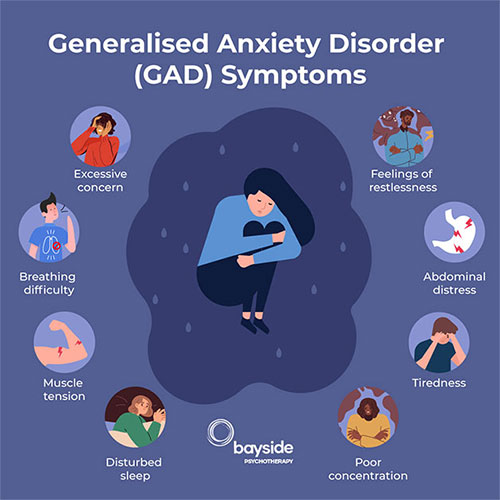Best Info About How To Diagnose Generalized Anxiety Disorder
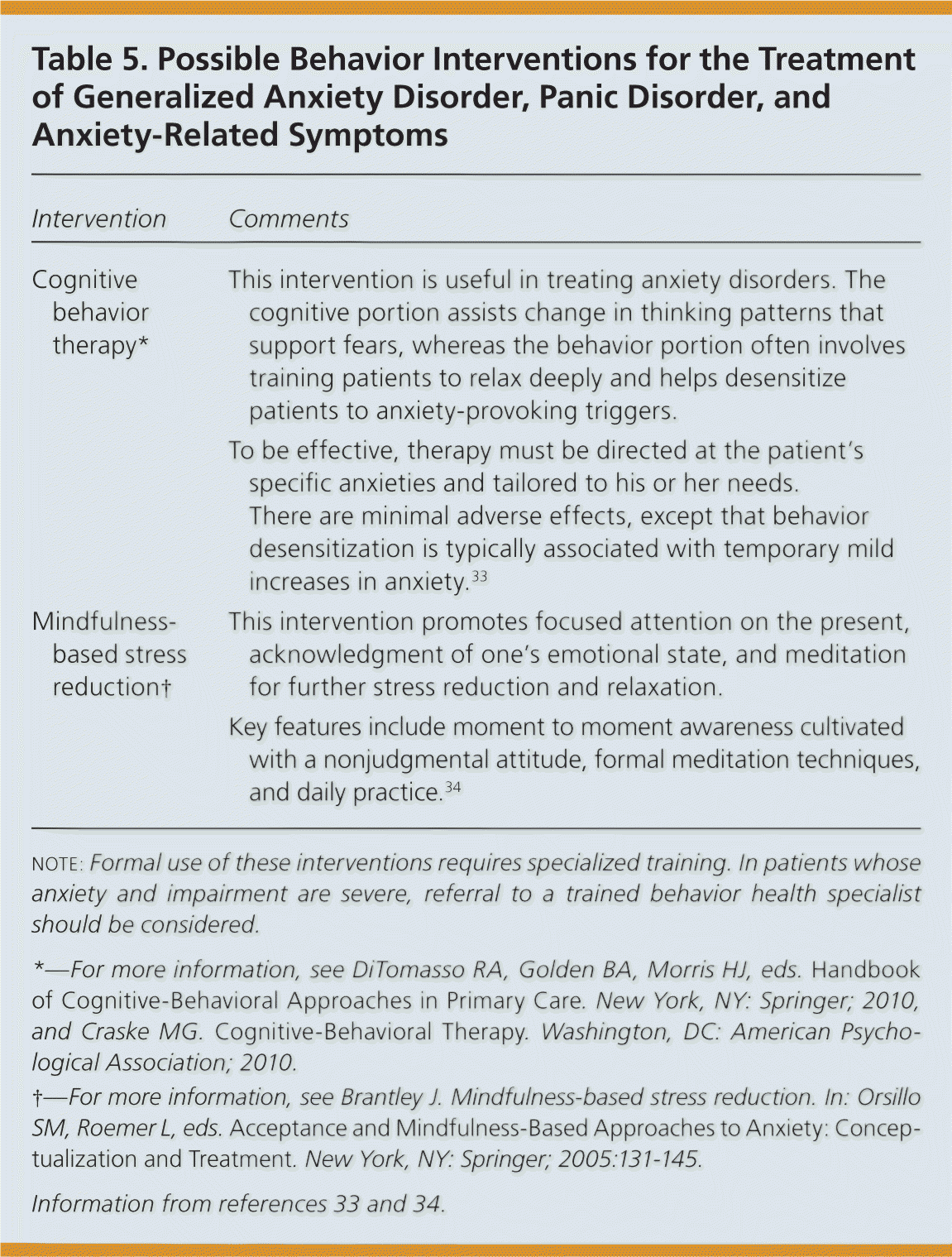
The major symptoms are both psychological and physical:
How to diagnose generalized anxiety disorder. Generalized anxiety disorder is characterized by chronic excessive worry accompanied by three or more of the following symptoms: What are the signs and symptoms of generalized anxiety disorder? How does a doctor diagnose anxiety?
Presence of overvalued or delusional thoughts (indicates psychosis and not anxiety disorder) pacing, wringing of hands. To diagnose anxiety, a complete physical examination is essential. Generalized anxiety disorder (gad) is listed in the diagnostic and statistical manual of mental disorders, fifth.
If a patient does not respond to a drug or cannot tolerate it. There are various criteria that a doctor considers when determining a diagnosis for anxiety. People with generalized anxiety disorder find it difficult to control their worry, which may cause impairment in social, occupational, or other areas of functioning.
Inability to set aside or let go of a worry, inability to relax, feeling restless, and feeling keyed up or on edge, difficulty concentrating, or the feeling that your mind goes. People with gad may feel restless, tense, or on edge. Worry excessively about everyday things, have trouble controlling their worries or feelings of.
The next step may be a switch from one standard drug to another (e.g. Check out table 5 which lists botanicals and supplements commonly used to treat anxiety disorder. Restlessness, fatigue, concentration problems, irritability,.
They may find it hard to focus and have recurring thoughts about a source of worry, such as finances. Frequently associated with significant anxiety, menopause should be considered in the differential diagnosis of gad. See your gp if anxiety is affecting your daily life or is causing you distress.
:max_bytes(150000):strip_icc()/dsm-5-criteria-for-generalized-anxiety-disorder-1393147-final-5cde49b87f644d4a9eb25ad7ab1ceae0.png)
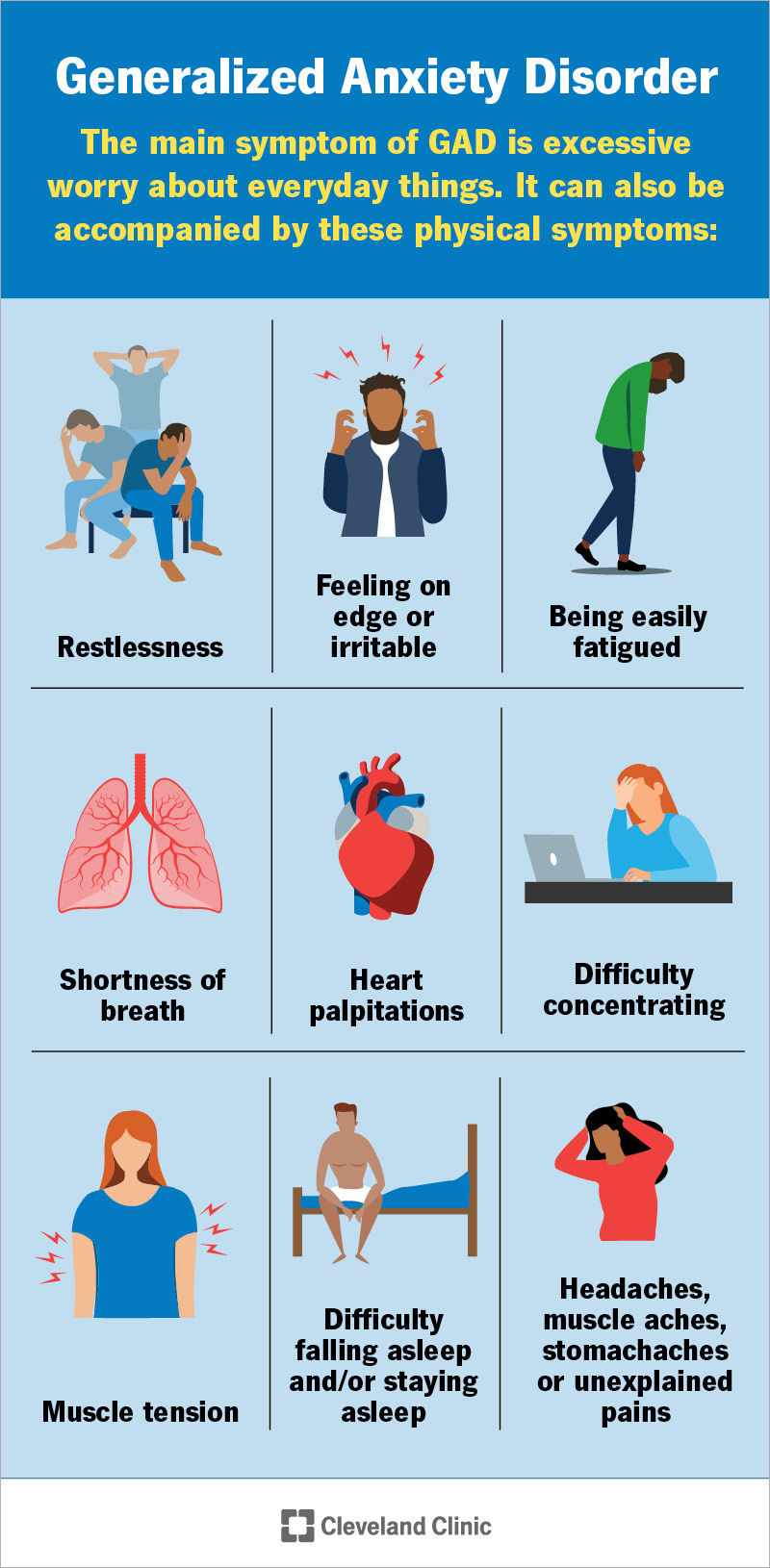

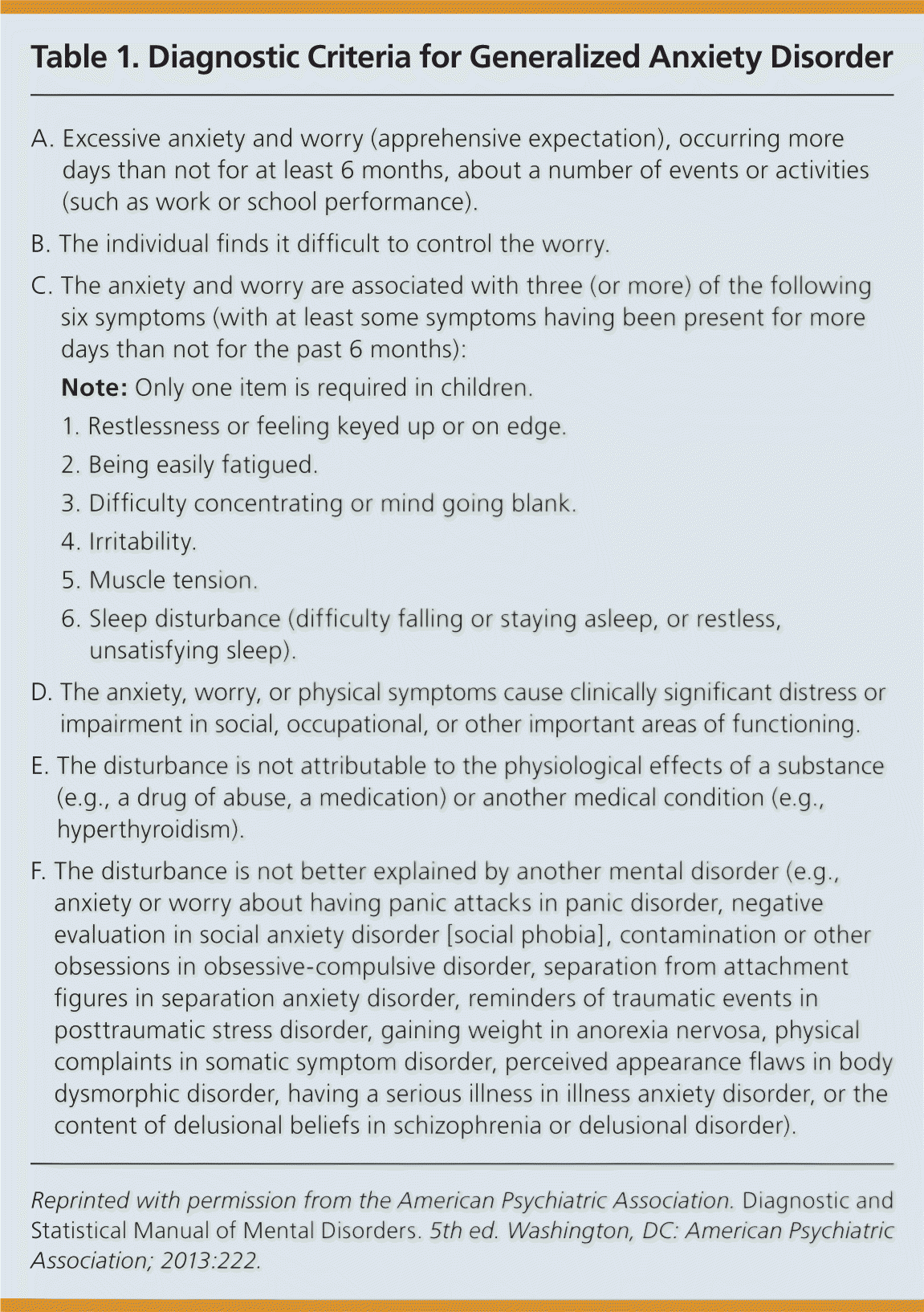



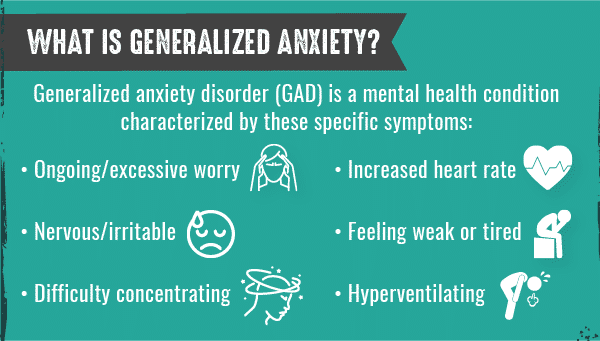

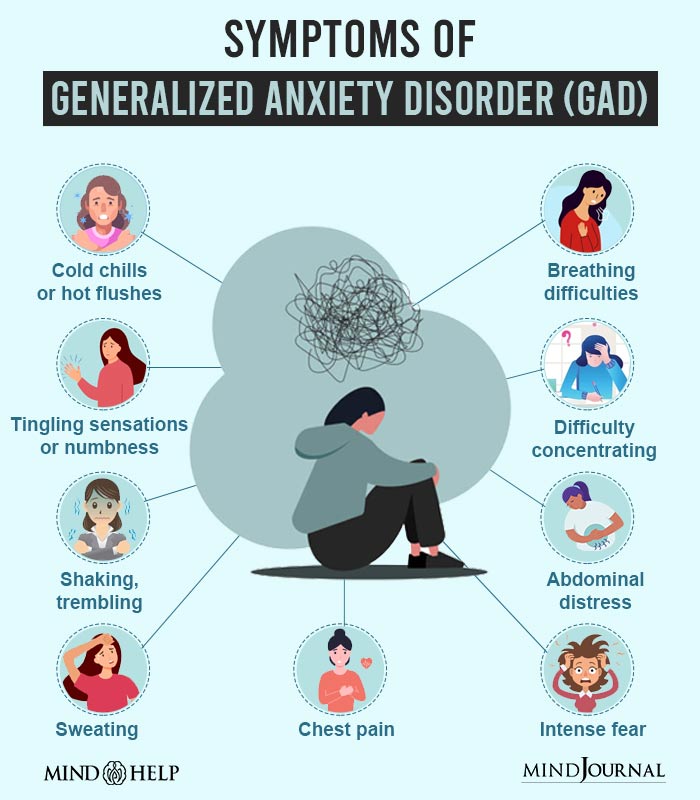
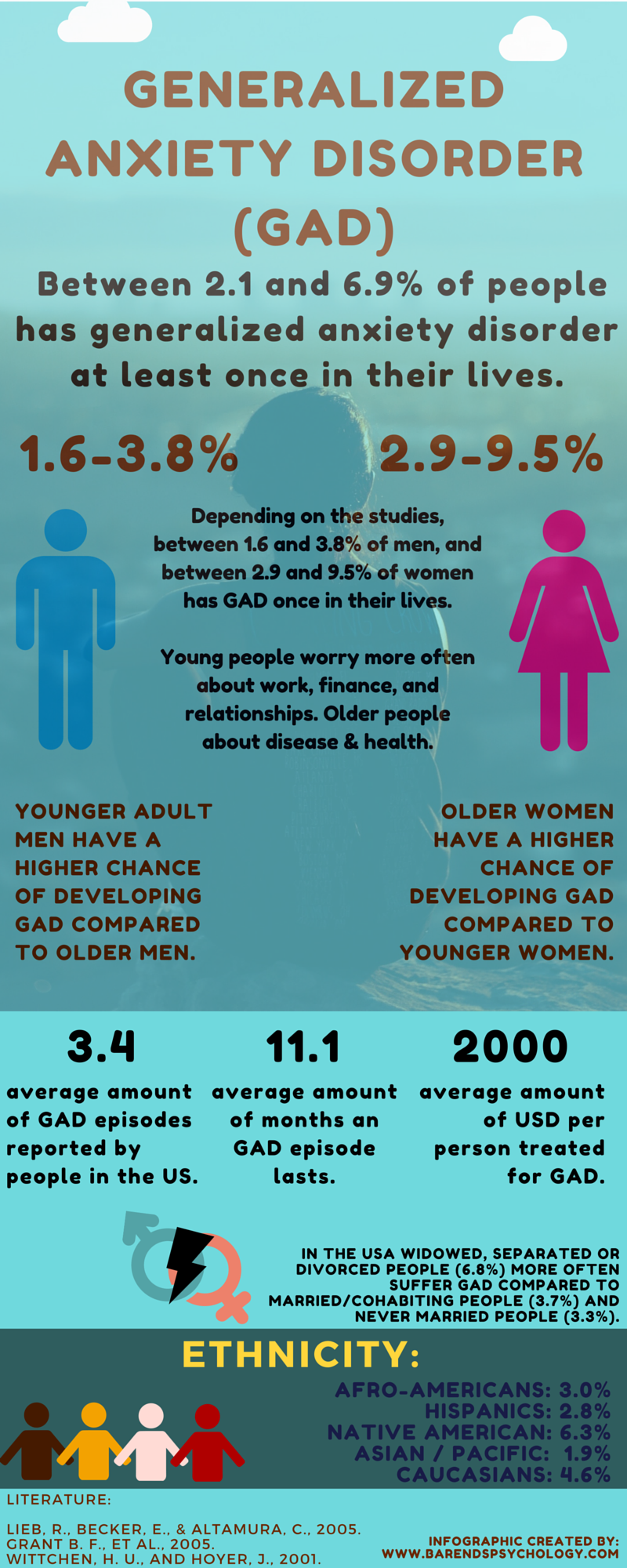
:max_bytes(150000):strip_icc()/gad-in-children-20759_V3-01-11d37325a8f241d7b481ee26b23ad0fe.png)
:max_bytes(150000):strip_icc()/anxiety-disorder-diagnosis-5114303_V2-412fb155825d40d9ab7a1c44fe8bb5be.jpg)
/generalized-anxiety-disorder-treatment-5181758-1500x1000-Final-44ed9da06a204735a81c580a35878313.jpg)
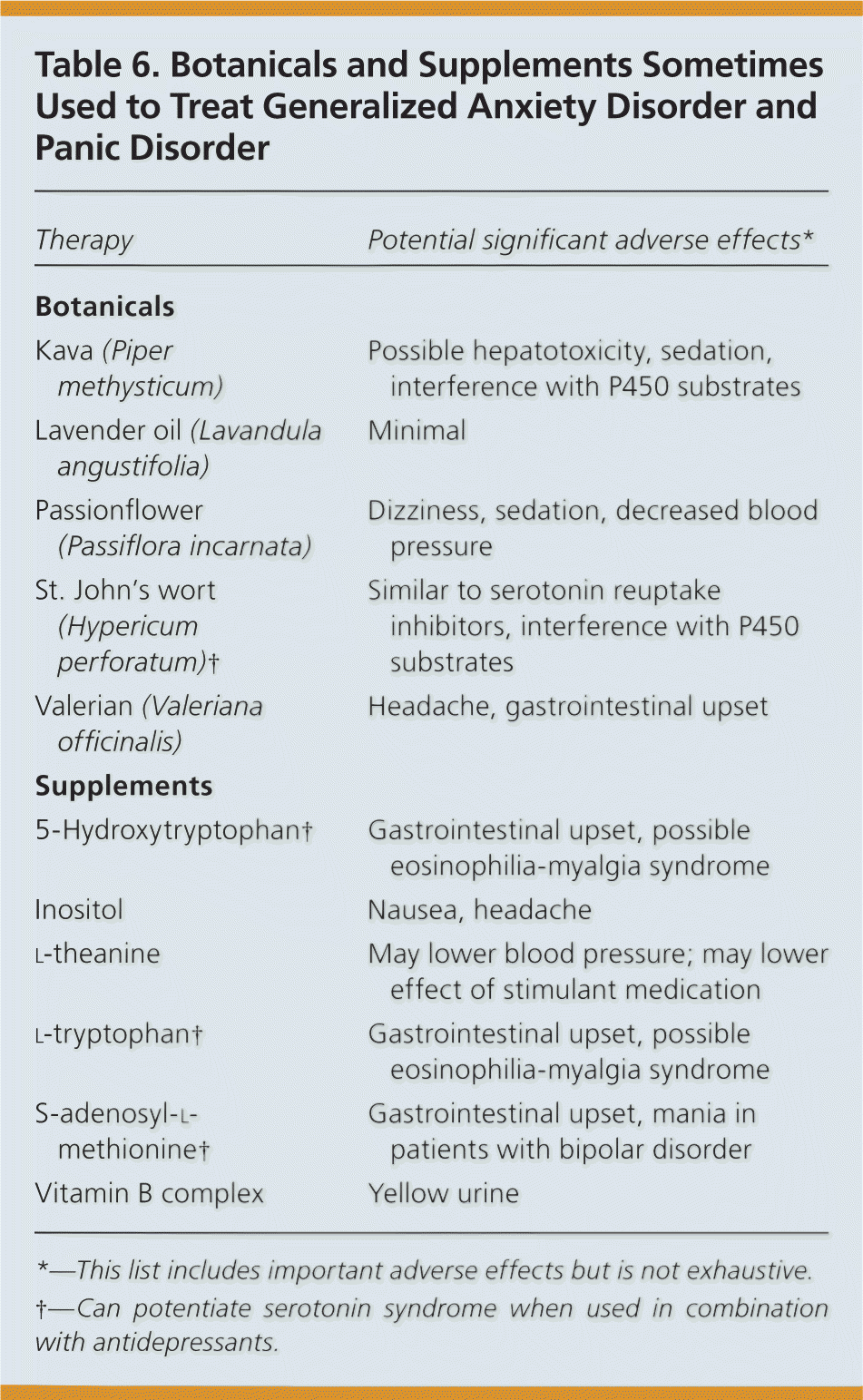
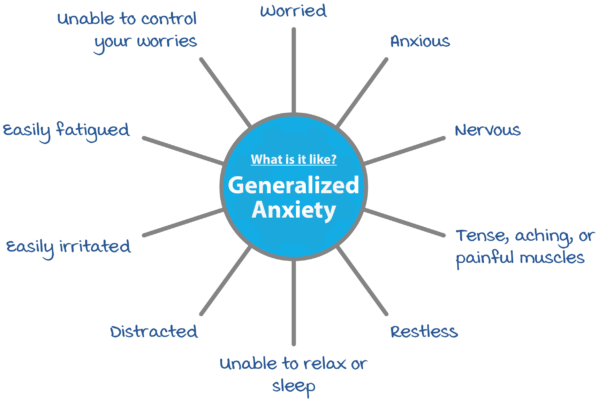
/generalized-anxiety-disorder-treatment-4171993-004f467a34c4479d8c50a74707e59477.png)
